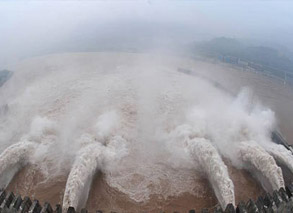More efforts for grain production
2010-02-01 13:30 BJTSpecial Report: No.1 Document Targets Rural-Urban Development |
In its first policy document of the year, China's central government calls for more efforts to maintain grain production, increase farmers income and develop rural areas.
In Fushun county, in southwest China's Sichuan province, farmers are encouraged to plant revegetate-paddy.
Revegetate-paddy, different from two-crop paddy, has its first harvest in August every year, and with its straw left, the paddy will revegetate.
In short, planting the revegetate-paddy once a year, farmers could harvest the rice twice.
the local government gives a 20-yuan subsidy per unit of area to those who plant the paddy.
And it's increased its budget for the building of irrigation infrastructure to support grain production.
JIn Yongjiu, deputy magistrate of Fushun County, said, "Previously, around 30 to 50 million yuan was spent every year on the country's irrigation infrastructure. Last year, this figure rose to 100 million yuan."
In 2009, subsidies reached a record high 123 billion yuan in China, 19.4 percent higher than 2008.
The central government says, more subsidies should be channeled into increasing the output of grain, potato, highland barley and peanuts, as well as the purchase of agricultural machinery.
Wei Jiayou, farmer of Fushun County, said, "The country provides more fiscal support for agriculture, so farmers will do more. We'll change the farmland into gold."
Meanwhile, the central government would implement more policies for purchasing and stockpiling major agricultural products, to stabilize the price of major farm produce. They include corn, soybean and oilseeds.
In 2010, the country aims to establish 4,900 more patterns of high output, and maintain at least 1.6 billion units of farmland to ensure gross production.
Editor: Zhang Ning | Source: CCTV.com
 Mail
Mail Share
Share Print
Print


 Video
Video









 2009 China Central Television. All Rights Reserved
2009 China Central Television. All Rights Reserved